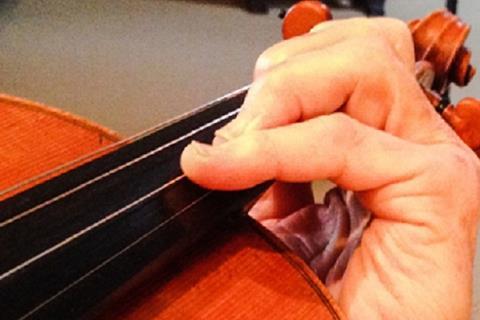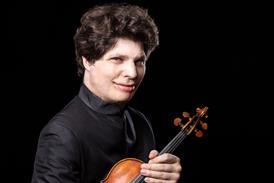Teacher Talk: your string teaching questions answered by our panel of experts. From 2011

Boris Kuschnir: I think of vibrato as a colour to help musicians make pieces more expressive. As in real life, there are a million shades of colours, and the infinite possibilities of vibrato in combination with other techniques enable musicians to show their thoughts, feelings and moods. Therefore, when teaching vibrato with special exercises and giving technical advice about it, I never separate it from music, as it is only a means to musical interpretation.
Bruno Giuranna: Vibrato should be practised separately from music and, even more, from a ‘music making’ attitude. Arm vibrato, wrist vibrato and finger vibrato should all be understood, felt, practised and exercised. Often when studying vibrato we discover unnecessary tension in the left hand, or in the left thumb, that needs to be corrected. Later, vibrato should also be practised in a musical phrase, starting at first in a way that is not too musically involved. Only after having mastered various kinds of expression will the interpretation be closer to how one wants and feels, and no longer simply ‘as it happens’.
Jeff Bradetich: On the double bass, it is absolutely essential to practise vibrato away from repertoire. Even those who have a natural ability to use vibrato still need to work on width, speed and amplitude (the yah-yah quality of the sound). As with any technical aspect of playing, it must be focused on in the practice room. This is very difficult for most students when music is on the stand in front of them.
Bonnie Hampton: The function of vibrato is an expressive one. Therefore it needs to be understood in relation to the musical experience. The actual physical motion can certainly be studied in itself, but it must be in conjunction with beautiful musical melodies. It’s also important to develop many speeds and widths of vibrato to meet the demands of the music. Basic habits of flexibility and freedom are absolutely essential for a fine vibrato to develop.
The student might practise a piece that would give the teacher an opportunity to discuss with them how vibrato relates to the musical feeling in it. Thus when the vibrato itself is practised, there would be a connection and a context. One hears so much playing where the vibrato is just put on top like a sweet frosting, rather than coming from the content and feeling of the actual piece.
Géza Szilvay: I would avoid teaching vibrato separately. The teacher should ensure that the young player’s left hand is in a relaxed position. If the student’s thumb is relaxed and doesn’t stay in only one position (don’t play only in first position) but is moveable, if the fingers are using only the minimum necessary force for stopping, and if the left shoulder is not raised so that the left arm is relaxed, the hand will be able to develop vibrato gradually. The teacher should play short pieces on the child’s small violin with gentle vibrato because the child will be able to imitate this sound better if it is introduced to them on their own instrument.
Read: Technique: Developing a controlled vibrato
Read: Violinist Lihay Bendayan: Fourth finger vibrato
Discover more Technique articles like this in The Strad Playing Hub
THE EXPERTS
Jeff Bradetich is professor of double bass at the University of North Texas College of Music
Bruno Giuranna teaches viola at the Fondazione Stauffer in Cremona, the Conservatorio della Svizzera Italiana in Lugano and the University of Limerick in Ireland
Bonnie Hampton was formerly on the faculty at the Juilliard School, teaching cello in both the college and pre-college divisions
Boris Kuschnir is violin professor at the Vienna Conservatoire and at the University of Music in Graz
Géza Szilvay is co-author of the Colourstrings teaching method and principal of the East Helsinki Music Institute
The Strad's Teacher Talk series was first published in the January 2011 issue.
Read: Developing arm, wrist and finger vibrato
Read: Technique: Continuous vibrato
Read: 10 things you need to know about vibrato
Explore more Technique articles like this in The Strad Playing Hub
Reference
Violinist Lihay Bendayan: Fourth finger vibrato
- 1
- 2
 Currently reading
Currently readingShould vibrato exercises be practised separately from the repertoire?
- 3
- 4
- 5
- 6
- 7
- 8
- 9
- 10
- 11
- 12














































No comments yet